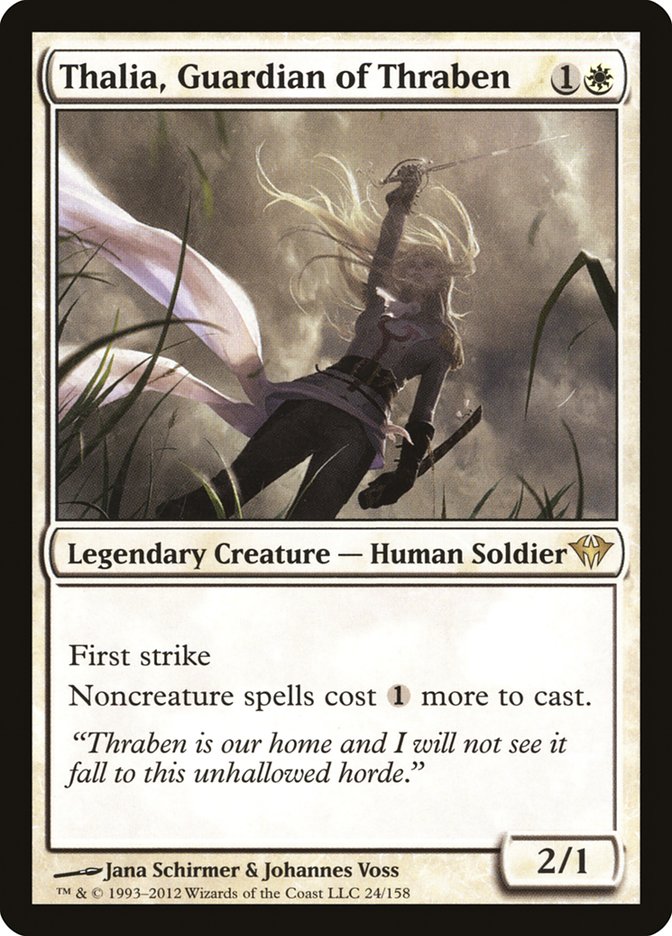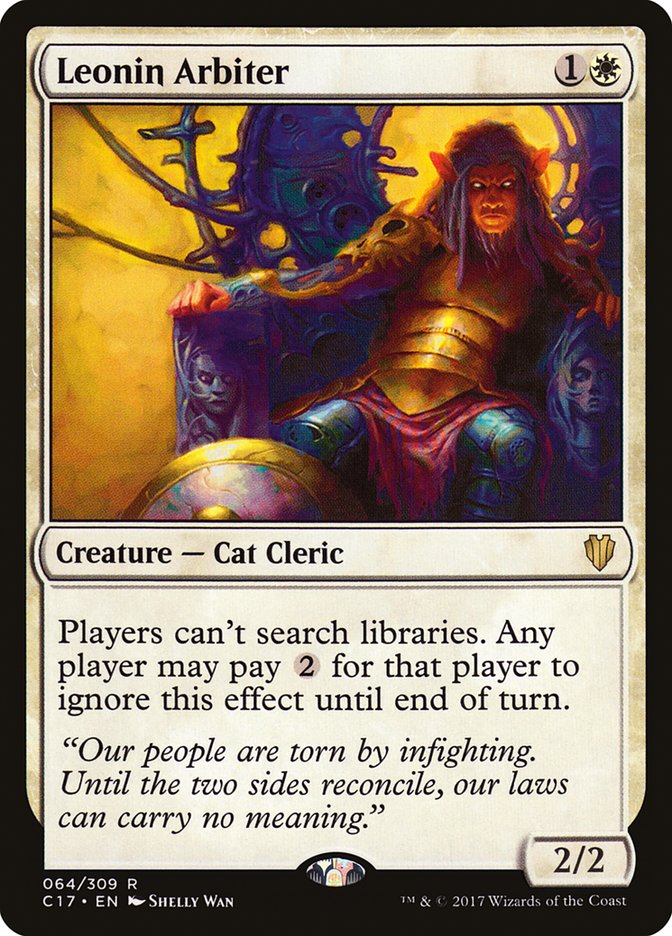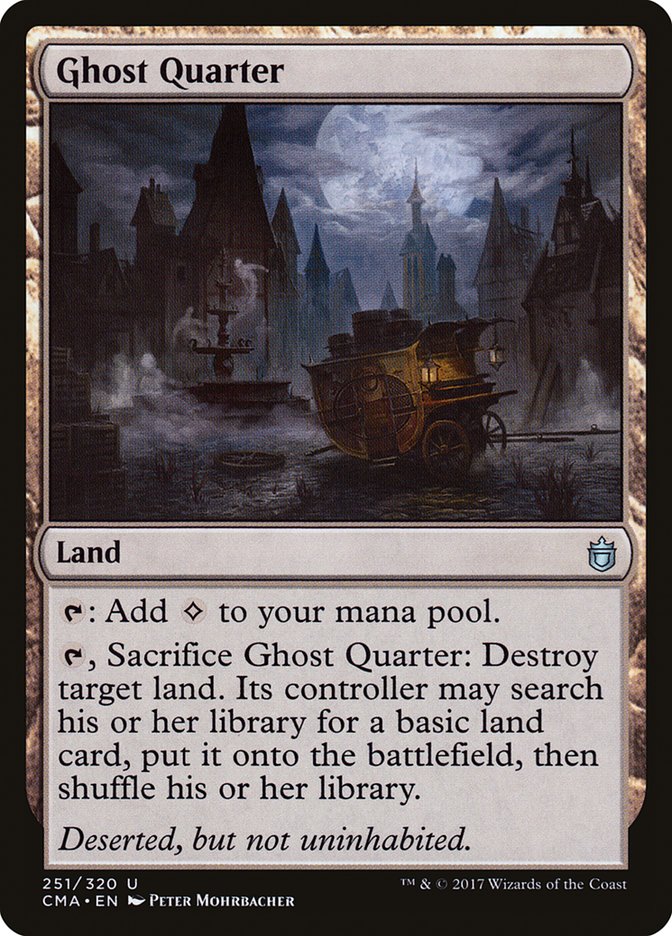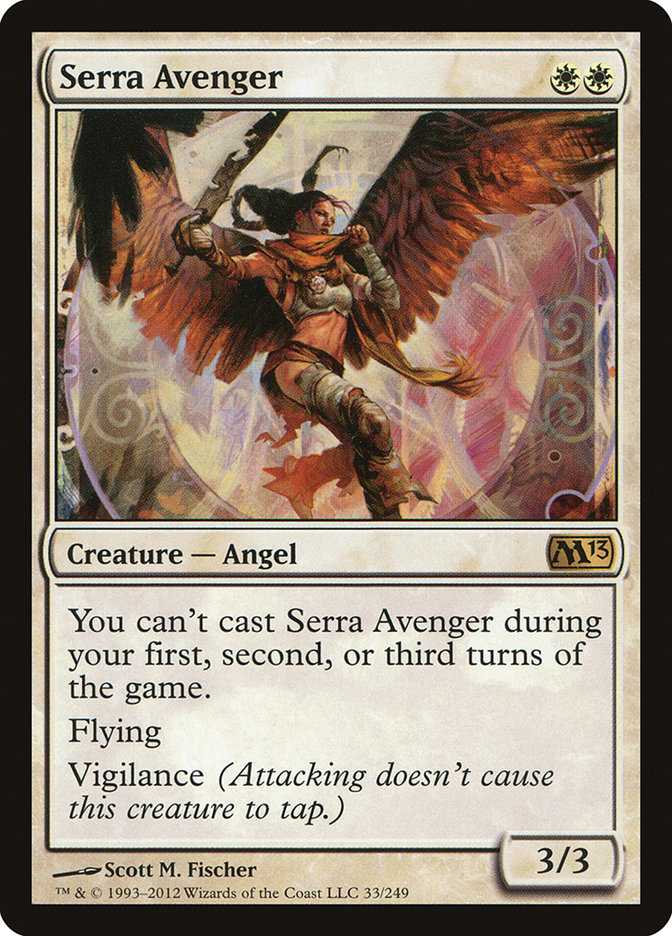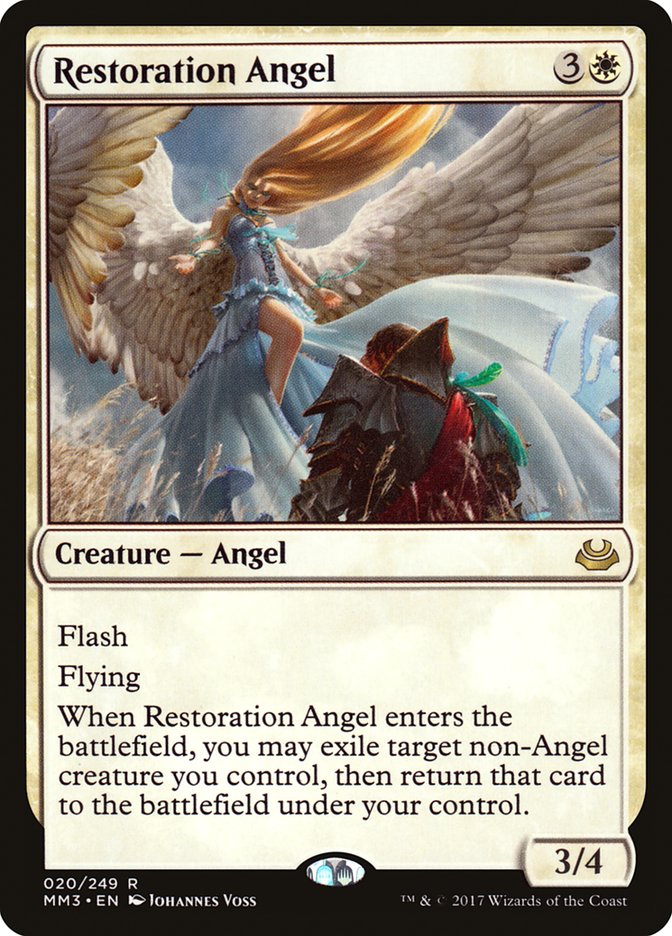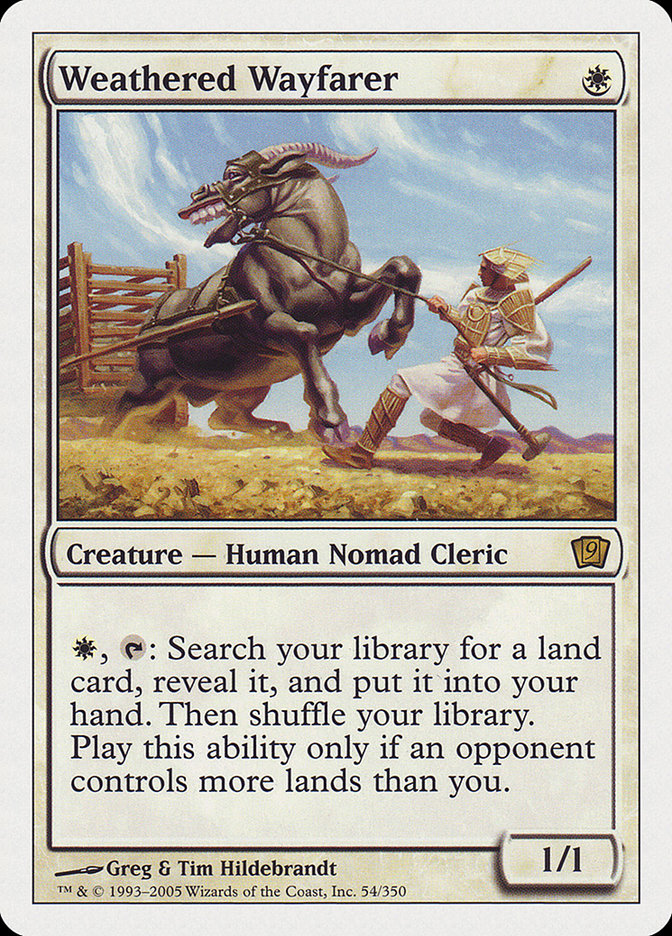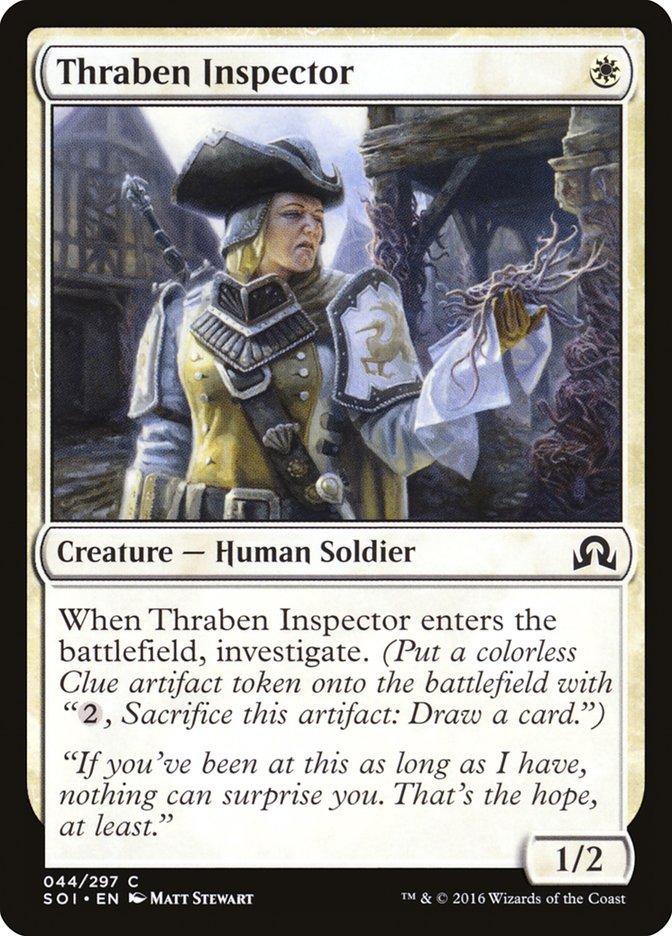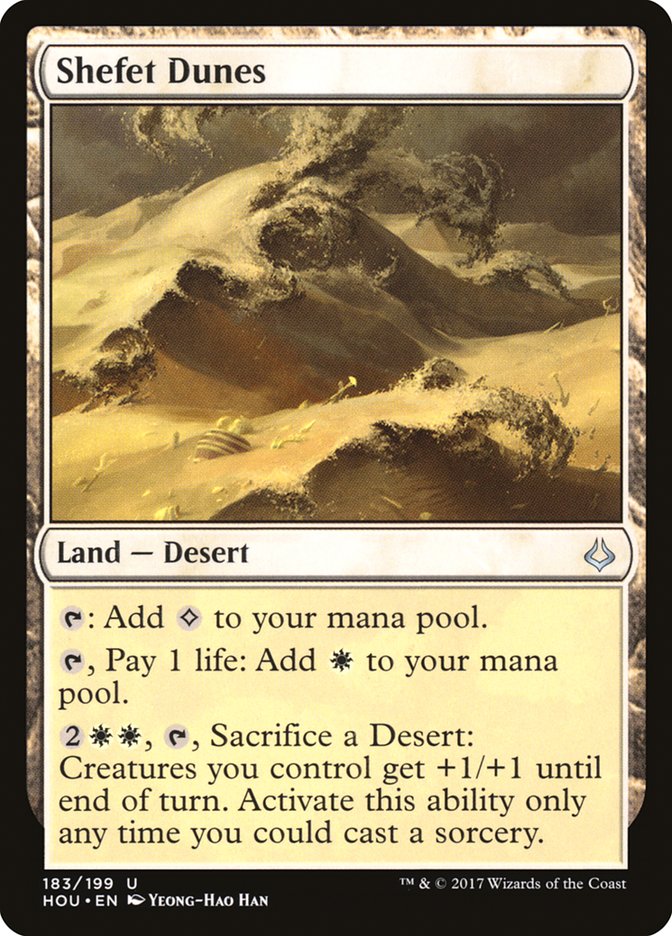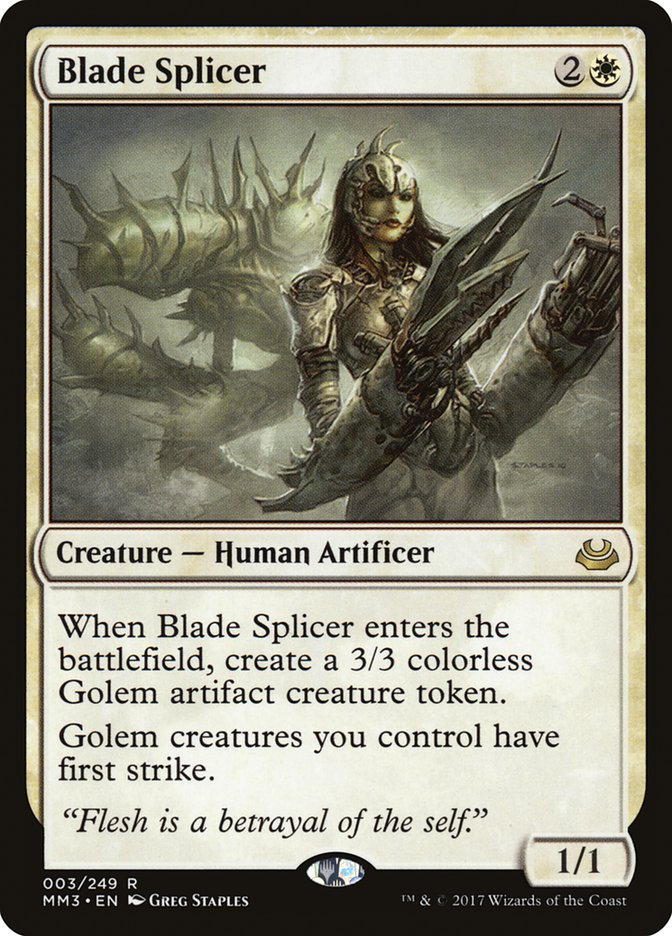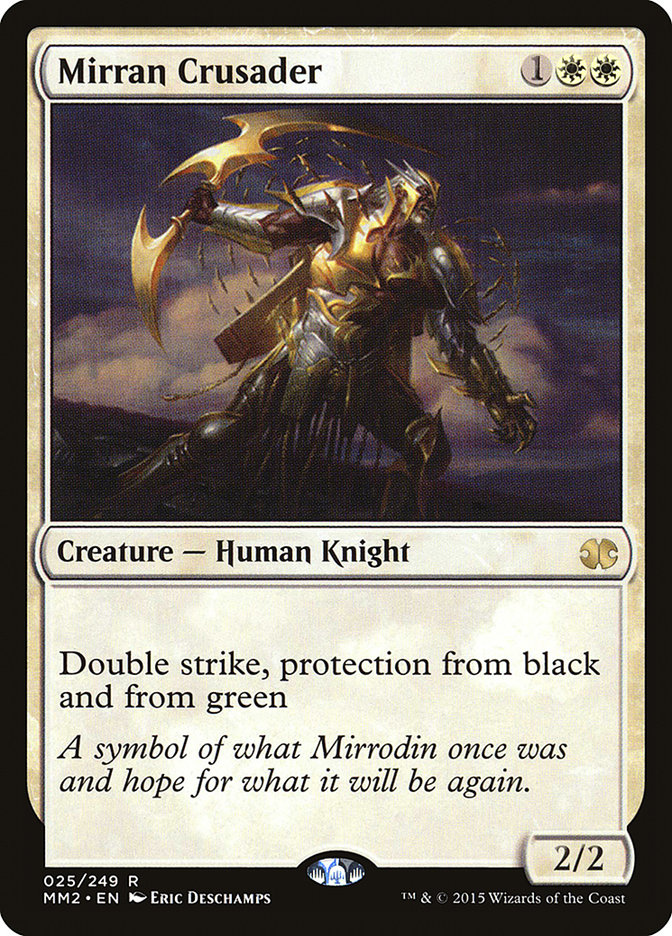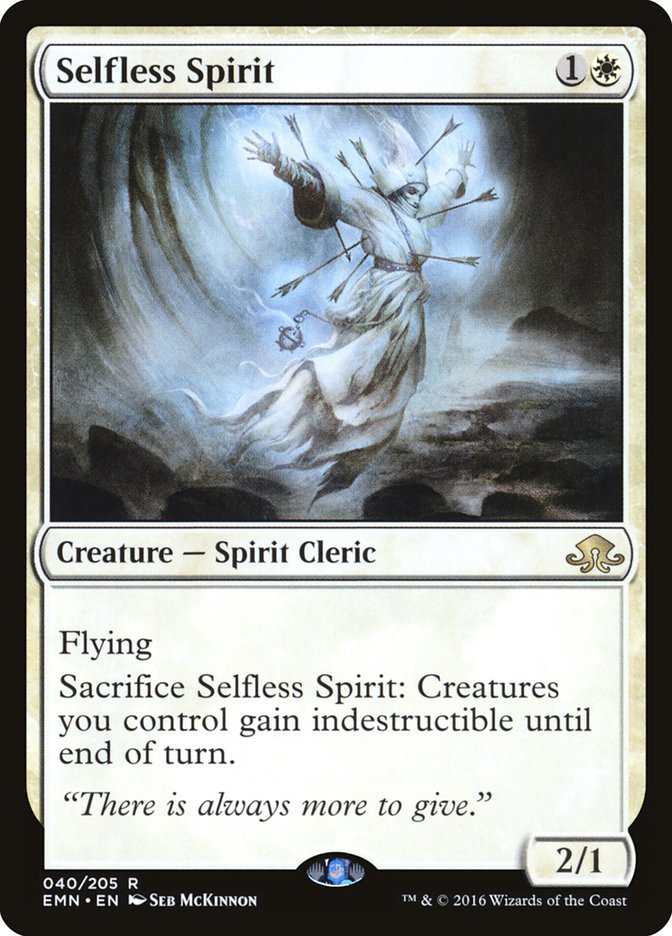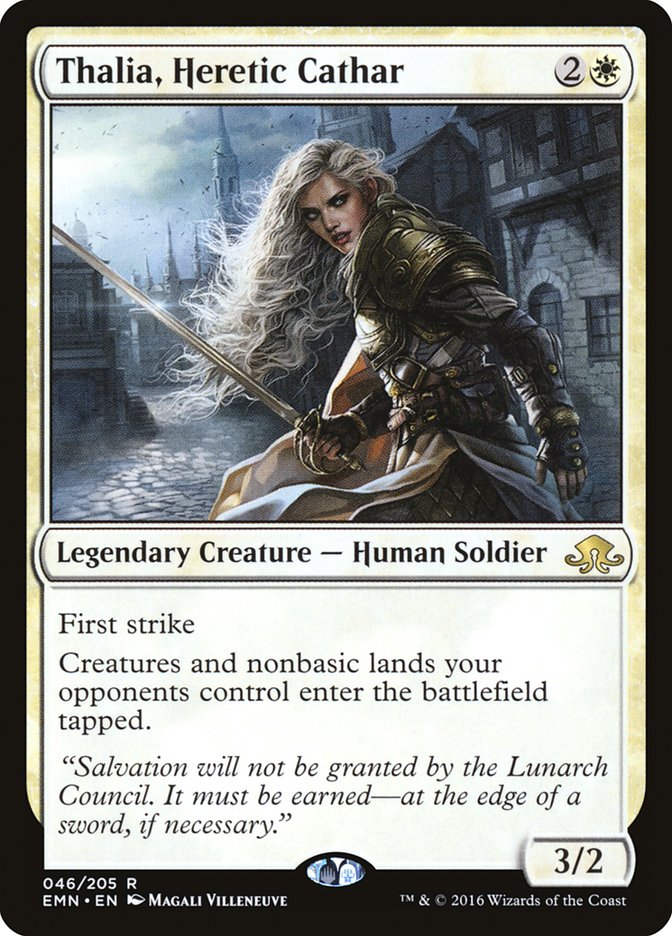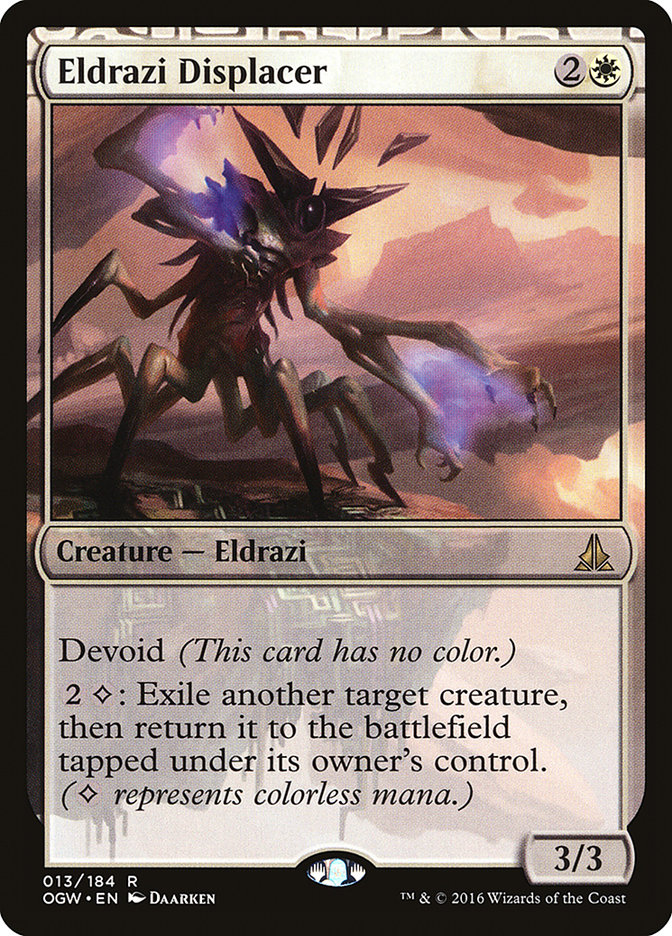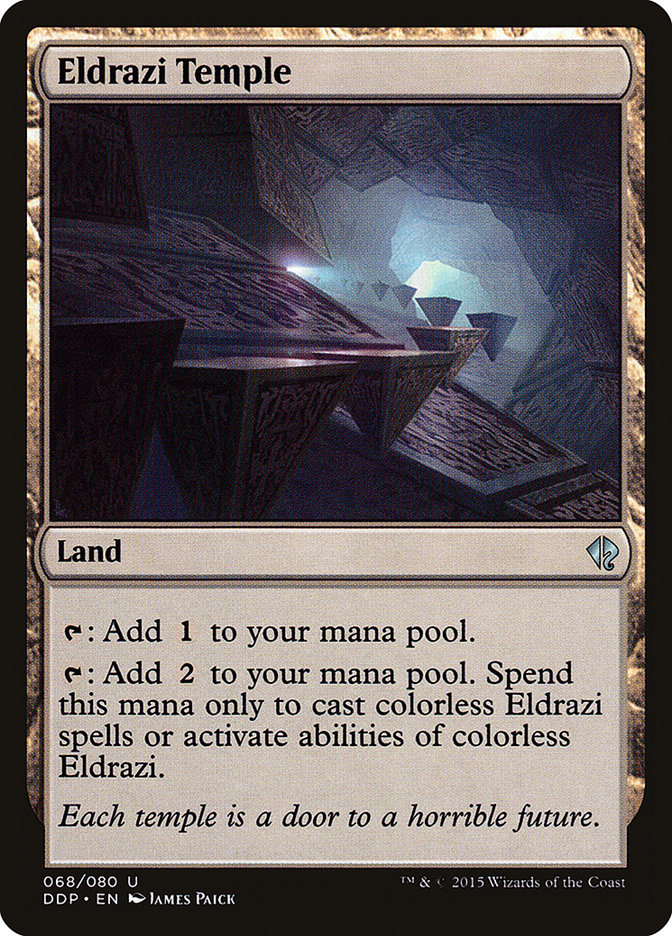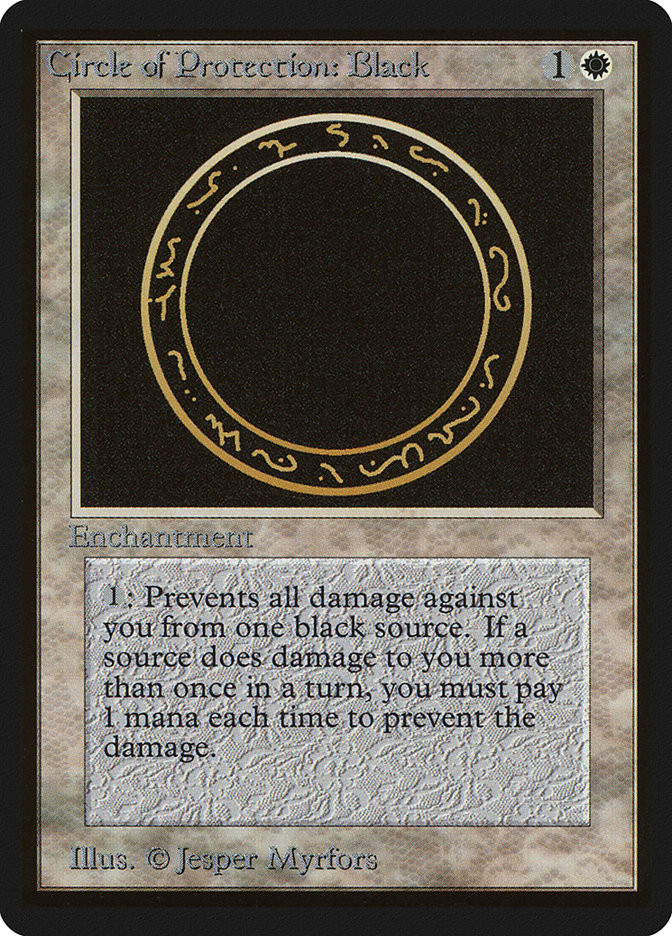As someone who absolutely loves Legacy, I’m always looking for ways to bring my favorite Legacy deck to Modern. Maybe it’s the griefer in me, maybe it’s the play that comes from sneaky tricks, but I absolutely love Death and Taxes.
While I certainly would have loved to win this most recent Invitational, one exciting second-best outcome is that a take on Death and Taxes took down the whole event.
Creatures (29)
- 1 Weathered Wayfarer
- 1 Serra Avenger
- 4 Flickerwisp
- 4 Leonin Arbiter
- 2 Mirran Crusader
- 1 Phyrexian Revoker
- 4 Blade Splicer
- 4 Thalia, Guardian of Thraben
- 4 Restoration Angel
- 4 Thraben Inspector
Lands (23)
Spells (8)

There are a lot of things that differentiate the classic style of what we think of as “Death and Taxes” in Legacy from what we have available in Modern. First of all, we only have one portion of the “taxing” element of Death and Taxes:
We don’t have the choking power of Rishadan Port and Wasteland. In their place, you have to cobble something together. Still, it can be quite effective.
Of course, one of the inevitable problems of all of this is that you can’t so easily simply “choke the opponent out.” One of the secrets of Death and Taxes is that, despite the history behind the name, it is not a “White Weenie” deck but much closer to a Prison deck. There is a reason that European players renowned for the Legacy deck like Thomas Enevoldsen have long called it “White Control.”
The Modern version is much worse at establishing that control than the Legacy version, which adds an extra demand: you need to close the game much more quickly.
SCG Tour Season One Invitational Winner Brian Coval’s build does a good job of that, with a fairly tight curve and a large amount of evasion. That being said, after picking the deck up, I found myself struggling with a few factors.
As a preamble, any Modern player is aware of just how wildly diverse the format is. You can have a deck and go 5-0 in a League twice, and then follow it up with a pair of 3-2 finishes before starting out 0-3 and trying to decide if you want to bother playing more. Depending on the layout of your sideboard, a wildly different array of matchups you might face could shift their likely outcomes by a great deal, and this can impact results.
So, suffice it to say, I had a lot of ups and downs with Coval’s deck. I loved it, and at the same time, there were elements I didn’t care for.
Let’s start with the Angels.
I’m on record as largely being against this card in this macro-archetype. There aren’t very many matchups where I actually feel like I want the card, and real estate in Magic is precious. You’re often pushing the deck on the counts of cards that require double white, and every other card of that type in the deck is a card that I wouldn’t cut into to make room for this one – I just value my Flickerwhisp and Mirran Crusader copies more than this one.
Restoration Angel is a great card in this deck. But it also created some problems.
It costs four.
This might not sound like a big deal, but as any Legacy Death and Taxes aficionado will tell you, the biggest problem with Palace Jailer is that, by costing four, you either have to actually cast it or mess up your Aether Vial. Now, Restoration Angel, having flash, practically gets this at a discount, but it still isn’t inconsequential.
On more than one turn, I found myself having to decide if I wanted to bump up an Aether Vial to four and realizing that the entirety of the game was riding on the call – mostly based on the top of my deck.
I started cutting into the card. Frankly, I could see the deck running a bunch of this card, given how wonderful it is in interacting with Blade Splicer to create an army or Flickerwisp to mess up the opponent, but I could also see the deck running none of it.
Realizing that I wanted the flickering effect of Restoration Angel made me think back to my Grand Prix Columbus experience in Legacy with Eldrazi Displacer in Death and Taxes, and I thought it might be a good experiment. After trying it out, I dropped all of the Angels and never looked back.
For reference, here is that Legacy deck:
Creatures (25)
- 4 Mother of Runes
- 2 Mangara of Corondor
- 1 Aven Mindcensor
- 3 Flickerwisp
- 4 Stoneforge Mystic
- 4 Phyrexian Revoker
- 4 Thalia, Guardian of Thraben
- 3 Eldrazi Displacer
Lands (24)
Spells (11)

I’d note that, while I did fine in the event, some boneheaded mistakes in match play definitely hurt me.
Now, let’s talk about “the ones” in the deck.
This is a card I both love and loathe. Especially by using timing tricks, you can really pull ahead with this card, or you can use it to catch back up in a long game or when on the draw if you have the time in a slow matchup. Much like the card Think Twice, I just don’t feel like this card is a great fit for the format, especially in a deck that is running Leonin Arbiter. I checked for lists that continued to be running the list online, and while there were a smattering, they were not extensive. Take it or leave it – I went with “leave it.”
Here, I felt like this card was basically just filling in the holes in the curve, and there is nothing wrong with that. Overall, the card is just so anemic, though, that even after deciding to get into becoming an Eldrazi Displacer list, I was still in a position where I was looking for other cards to fill in the deck that were accomplishing some kind of work. The correct number of Thraben Inspector is probably between one and four depending on the rest of the details of a specific list – a minimum of one just to acknowledge the realities of a curve, but only running as many extra copies as you have room for after you get in any of the other cards you feel like you need to be playing.
Comparing curves of where I ended up to Brian Coval, I felt pretty satisfied. In the following section, [C] stands for “creature” and [S] for “noncreature spell.”
Coval:
1 – CCCCCSSSSSSSS (12)
2 – CCCCCCCCCC (10)
3 – CCCCCCCCCC (10)
4 – CCCC (4)
Sullivan
1 – CCCSSSSSSSS (11)
2 – CCCCCCCCC (9)
3 – CCCCCCCCCCCCCC (15)
4 – (0)
That curve is also a little misleading when you take into account Eldrazi Temple, which can make the deck masquerade as having more “twos.”
While I worked on this deck, as always I kept on working on brews of various kinds when I ended up getting crushed by a G/W Hatebears deck, which surprised a crazy brew I was running with this card:
Well, then.
In that deck, Knight of the Reliquary made the card particularly damning, but it was a revelation. Easily, a Shefet activation could speed up the deck by a full turn. The question became “how many.”
I’m still working out that number, but the answer is either “two” or “three.” I’m thinking that it may ultimately just depend on metagame concerns, but the card certainly isn’t without costs. In that G/W Hatebears deck, I’m sure there was only one, but in a mono-white deck, running just one sounds like a luxury. Running four sounds like suicide.
After working out all of the kinks, here is where I am currently with Modern Death and Taxes:
Creatures (28)
- 4 Flickerwisp
- 4 Leonin Arbiter
- 2 Mirran Crusader
- 1 Phyrexian Revoker
- 4 Blade Splicer
- 4 Thalia, Guardian of Thraben
- 3 Eldrazi Displacer
- 3 Thraben Inspector
- 1 Thalia, Heretic Cathar
- 2 Selfless Spirit
Lands (24)
Spells (8)

There is a particular core to the deck that I think is irrefutably necessary.
All of these cards have a pretty simple requirement: they need to be four-ofs. Whether you’re a Restoration Angel build or an Eldrazi Displacer build, you are going to want your four Flickerwisp, the choking-out power of the base of the mana-denial, and the raw power of Path to Exile and Aether Vial (which is just fabulous in this style of deck).
The remainder of the details are up to your specific concerns you’re trying to work with. I’ve already addressed a few elements, above, but there is more to be said about the rest.
Even if the deck is only running two Shefet Dunes, having cards that take a great deal of advantage of a +1/+1 effect is important. Blade Splicer is great at both putting down a fast clock as well as setting up a powerful defense. Mirran Crusader can utterly shut down an entire classification of decks. In different metagames, in different configurations, these numbers can change.
This card has a two-fold effect. First of all, it is an evasive potential attacker that is low on the curve. Second, though, removing a key creature can be the opponent’s path out of the stranglehold this deck creates. In the jiu-jitsu match that happens with this deck, this card can be a devastating pseudo-Seal on the game. In a surprise from Aether Vial, games can be stolen. I wouldn’t run more than two unless the metagame was heavily into destroying creatures.
The effect from Thalia, Heretic Cathar can be a rough one, especially when you’re attempting to work the game into a shorter window. Still, while I like this effect a lot, it isn’t so good that I’d want more than one copy. I could easily see cutting this card for a fourth Thraben Inspector if you are feeling like the curve needs to drop.
I’m running three of each of these cards, and I’ve been wildly happy with it. Dropping a fast 3/3 can be a huge play when you’re trying to ensure swiftly closing games. In addition, though, Eldrazi Displacer becomes yet another card that opponents often must remove before they are able to get to work on winning the game. These are pretty powerful abilities without even getting to the devastation that a single Eldrazi Displacer can wreak in the late-game by shutting down battlefields or growing an army of metal with Blade Splicer.
Looking at the lands, people might notice that I’m running a great deal of them. 24 lands is a lot, but as I discovered in the Legacy build of the deck, with Eldrazi Displacer in the mix, you really want them. The Eldrazi Temples are incredibly powerful, but they do knock into the counts of other land – you’ll notice only two Tectonic Edges, a number I’m actually currently happy with.
If you want more, you could cut into two other lands I’m running by dropping the Eldrazi Temple and then the Mutavault (in that order), but I find that I really want the extra protection against mana flood from the creature-land, and the extra Eldrazi Temple has ensured a quasi-lowering of the curve which I think is essential.
The sideboard isn’t doing anything revolutionary. One important card that I have added to the sideboard is something as ancient as the hills.
At this point, this card just feels like lights-out against Death’s Shadow. In time, I might discover that I don’t need the card for that matchup, but for now I’ve been enjoying it in the sideboard.
I’m really happy with where I’ve come to with this deck. If I hadn’t had someone play Shefet Dunes against me, I never would have even considered it for the deck, but since they did, I’m convinced. If anything might get me back on board with Weathered Wayfarer in the deck, it could well be that Desert by itself.
In Modern, a deck like this really has to slant slightly more aggressive, and I’m really pleased at the nudge this deck makes. Brian Coval’s list is one I definitely love, and it won the SCG Tour Season One Invitational for a reason, but if I were sleeving up Thalia in the coming days, I’d put away the Angels and bring in the Deserts and Displacers.
I know that when I looked at the spoilers for Hour of Devastation, I had no idea I’d be liking Deserts in Modern!


